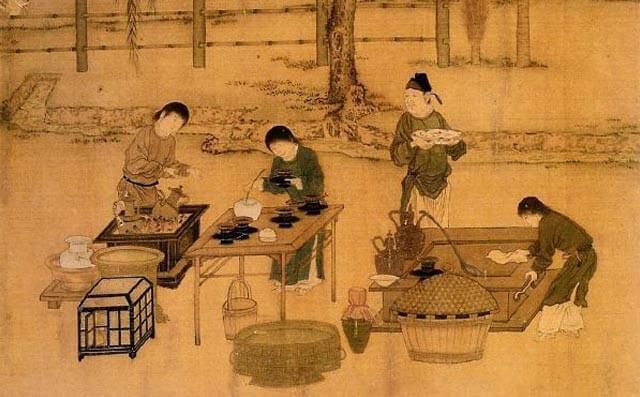You may have heard about The Four Great Inventions of Ancient China (papermaking, printing, gunpowder, and the compass), but did you know that there are many more?. The innovation and ingenuity we see from China today stretches back to a rich history. In fact, the country has given birth to some significant inventions that have shaped the course of human civilization.
From advancements in communication to groundbreaking discoveries in science and technology, Chinese inventors know how to leave their mark in the world. Read on to learn more about the top ten inventions to have had a profound impact to our daily lives and to global development.
1. Papermaking

Paper, as we know it today, was first born in China under its Han Dynasty almost 2,000 years ago, in AD 105. The process was created by Ts’ai Lun, a Chinese court official, who used rags from textile waste as the raw material.
The method was initially a closely guarded secret, however it eventually reached Central Asia, the Islamic world, and Europe through trade and cultural exchanges. Soon, this invention was replaced by using other plant materials such as bark, hemp, and bamboo.
The invention revolutionized developments in education, literature, administration and communication. It played a huge role in the recording and sharing of ideas, and thus to the advancement of civilizations around the world. While it is largely becoming replaced by technology in our present day, paper continues to be a fundamental aspect in our daily lives.
If you’re intrigued by all things paper, you may be interested in studying a PhD in Pulp and Paper-making Engineering at Nanjing Forestry University
2. Printing

The invention of printing in China was yet another game changer. Invented around the 8th century during the Tang Dynasty, it involved a revolutionary technique of re-arranging and reusing individual characters, rather than the preceding method carving out whole blocks for each page.
This innovation paved the way for the modern printing press we know today. It meant books could be produced faster, cheaper, and in larger quantities. More books meant more knowledge spreading like wildfire, lighting up minds all over the place.
3. Compass

The compass, as we know it, was developed in ancient China during the Han Dynasty around the 2nd century BCE. This ingenious device harnessed the power of magnetism to point travelers in the right direction.
The Chinese compass, also known as the “south-pointing spoon,” consisted of a magnetized needle attached to a floating platform. This needle aligned itself with the Earth’s magnetic field, providing a consistent reference point. Sailors and explorers could now determine their direction more accurately, which made long-distance journeys much more reliable and efficient.
From the Age of Discovery to the globalization of trade and travel, the invention of the compass played a huge role in our global advance. It revolutionized maritime exploration, opened up new trade routes, connected cultures, and expanded horizons.
4. Gunpowder

An explosive invention that changed the face of warfare, gunpowder was developed in China during the Tang Dynasty around the 9th century. It’s a potent mix of sulfur, charcoal, and potassium nitrate that ignites with a bang when exposed to flame.
Gunpowder was originally invented for medicinal purposes, particularly influenced by the belief that it could promote immortality. However, its destructive potential was quickly realized Over time, it found its way into the development of firearms, cannons, and explosive devices, transforming military tactics and warfare forever.
5. Porcelain

Porcelain is a ceramic material renowned for its beauty and durability. It was invented in China during the Han Dynasty, around the 2nd century BCE, when artisans used a specific type of clay called kaolin and fired it at high temperatures to achieve a translucent and resilient ceramic.
This breakthrough in pottery production quick changed the ceramics industry, having a profound impact on artistic and cultural expression. Porcelain quickly became highly sought after, both for its practicality and aesthetic appeal, and its influence spread across the globe, shaping the world of pottery and fine art.
6. Paper Money

During the Song Dynasty around the 7th century CE, the Chinese decided to address the inconvenient of carrying heavy copper coins. Thus, the concept of paper money was introduced as a medium of exchange. It was initially issued by private merchants, and its popularity spread rapidly thanks to its convenience and ease of use.
The government later took over its production and established a standardized system. This invention impacted economic transactions, facilitated trade, and laid the foundation for modern banking systems worldwide. This was an invention that marked a significant milestone in the evolution of currency and in global financial systems.
7. Tea Cultivation
Legend has it that in 2737 BC, the Chinese emperor Shen Nung was sat beneath a tree while his servant boiled his drinking water as a hygienic precaution. Some leaves blew into the water and infused the liquid, creating the first tea. It was here in ancient China that Chinese farmers then began developing techniques to cultivate and process this newly-discovered plant, Camellia sinensis.
It didn’t take long for the beverage to pick up its popularity; it was much-loved for its refreshing taste and potential health benefits. Tea cultivation became deeply ingrained into China’s culture and traditions as it elevated into an art form. It established a presence amongst social gatherings, ceremonies, and even philosophy. This appreciation for tea continues to thrive in China, as well as across the globe.
8. Silk Production

The production of silk originated in ancient China around 2700 BCE, following the discovery of the silkworm and its ability to produce fine threads. The Chinese nurtured and domesticated the silkworms, carefully extracting the silk from their cocoons. Silk production was monopolized and kept a guarded secret by the Chinese for centuries. Silk became a valuable commodity that was highly sought after for its luxurious texture and as a symbol of status and wealth. The invention had a large influence in fashion and trade, fostering cultural exchanges along the historic silk road.
9. Abacus

The abacus emerged in China around 2,500 years ago as a simple yet ingenious calculating tool that would revolutionize mathematical calculations. Consisting of rows of beads or stones on rods, the abacus provided a practical and efficient method for performing arithmetic operations. Due to its design that allowed for quick manipulation and accurate calculations, it was an invaluable tool in many fields, such as commerce.
The invention of the abacus laid the foundations for future developments in computing technology and advancements in mathematical knowledge and problem-solving.
10. Kites

The invention of kites in ancient China is a fascinating achievement that dates back over 2,000 years. Chinese inventors discovered that by attaching lightweight materials, such as bamboo and silk, to a frame, they could create objects that could fly in the air.
Chinese inventors initially used kites for signaling and communication on the battlefield, as they provided a strategic advantage for sending messages and transmitting signals over long distances. They were also used for measuring distances and determining wind patterns, which also aided in military applications. They also had a large impact in scientific and meteorological observations, giving Chinese scholars insights into wind currents, atmospheric conditions, and aerodynamics.
However, kites also held cultural and symbolic important in ancient China, where they were used in religious ceremonies and festivals as a symbol for good luck, prosperity and for warding off evil spirits. Kite flying became a popular form of entertainment that was used to showcase creativity and skill.
Be A Part of China’s Innovation and Legacy
China’s legacy of groundbreaking inventions continues to inspire and drive progress today. Our team at China Admissions can attest to the fact that China offers students and professionals from around the world a unique opportunity to study in a powerhouse environment that values innovation and academic excellence, and with a rich history that it continues to grow from.
Inspired by this article? Whether you’re fascinated by ancient traditions or drawn to the cutting-edge advancements in technology, Chinese universities offer a large range of interesting programs at different levels for you to choose from. Here are some suggestions to get you started.
No programs found matching your criteria.
No programs found matching your criteria.
No programs found matching your criteria.
Loading programs...
Loading programs...
![]()
- The Top Majors to Study at Beijing Normal-Hong Kong Baptist University (BNBU) in 2025 - December 19, 2024
- United International College (UIC) Entrance Scholarship: Apply Now for 30% Off Your Tuition - November 29, 2024
- What Students Are Saying about Chinese Language Programs - October 27, 2024




